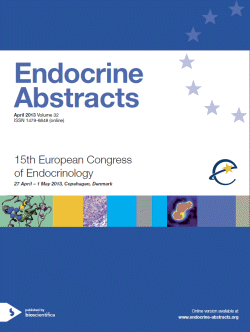Searchable abstracts of presentations at key conferences in endocrinology
Symposia
New advances in GPCRs in endocrinology
ea0032s4.2 | New advances in GPCRs in endocrinology | ECE2013
Biased agonism of the AT1 receptor: perspectives in drug discovery?
The angiotensin II type 1 receptor (AT1R) belongs to the family of seven trans-membrane (7TM) receptors, also referred to as G-protein coupled receptors. The AT1R is the primary effector of the reninangiotensin system, and serves as a key regulator of cardiovascular physiology. The importance of the receptor is clearly illustrated be the frequent use of AT1R blockers and ACE inhibitors in cardiovascular medicine. Upon binding of Ang II th...
ea0032s4.3 | New advances in GPCRs in endocrinology | ECE2013
G-protein-coupled receptor heteromers as new targets for drug development
Together with Profs Lefkowitz and Kobilka, G-protein-coupled receptors (GPCRs) have taken the stage in the 2012 Nobel award for Chemistry. The Royal Swedish Academy of Sciences states that About half of all medications achieve their effect through G-protein-coupled receptors. As shown in previous talks in this session, GPCRs are not acting individually; often they form homodimers and, more interestingly, they may occur as heterodimers. Heteromers open a completely ...




